Dairy producers considering new or upgraded milking facilities have a lot to think about. Cow comfort, ergonomics, productivity, efficiency – all these things are top-of-mind when designing. After all, the purpose of a milking parlor is for people to milk cows safely and efficiently. That’s the heart of a good system. A parlor’s CIP system is vital. It’s like the kidneys of a milking system. Don’t overlook the importance of its design and proper installation. Optimum milk quality, and the premiums that go with it, depend on effectively cleaned and properly working equipment. It’s similar to how the heart depends on the kidneys to clean and filter the blood it pumps.
If you invest in a new parlor now, you expect that parlor to perform well for your operation for at least the next decade – maybe more. In that time, you can also expect that our industry’s focus on milk quality will only increase. The first and last step to producing high-quality milk is proper cleaning. So it’s worth taking the time to double-check the design and installation in these six key areas:
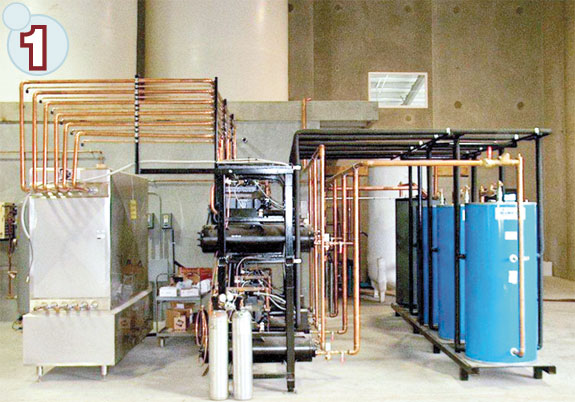
1. Ample hot water. One thing that is often overlooked in new installations is the volume of hot water required to clean. In fact, in nearly all the operations our milk quality teams visit, rarely are new parlors designed with ample hot water. This oversight usually requires more costly modifications later. Know the volumes of water required for your system size so your water heaters can have enough capacity from the start. ( Photo 1 )
The three blue cylinders on the right are pre-heaters . Behind the pre-heaters is the water heater , and a large storage tank stands behind the water heater. This system is designed to circulate the stored water back through the hot water heater to ensure the appropriate temperature is constantly maintained.
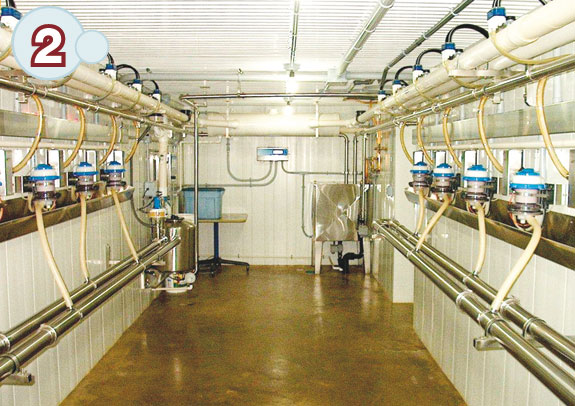
2. Proper size wash vat. The first principle in cleaning is to have the right volume of water. If your system doesn’t have the proper water pressure, it will end up sucking air, and air does not clean. You need water contact, and therefore you need adequate water volume. ( Photo 2 )
In this well-designed system, the wash vat , which is properly sized for the system’s water volume, sits at the back right. The air injector is installed at about waist-height, just above the receiver, allowing for easy access. The receiver is depicted on the left side of the photo. Notice that the milk lines are going into the top half of the receiver. On the wall between the wash vat and the receiver, you’ll notice that the programmer for automated washing is mounted for easy access. Be sure to install a programmer that is very flexible, so you can ensure proper washing times, solution amounts and temperatures.
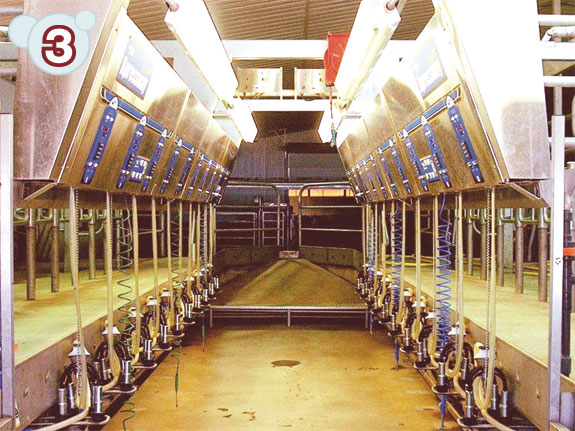
3. Good support for units. In the parlor, be sure the units sit on the jetter trays in a way that does not pinch the milk tubes and restrict water flow. The parlor itself should be well-lit, so that you can inspect details like this. ( Photo 3 )
In this photo, notice all the units are standing straight on sturdy jetter trays , not tipping over and pinching the milk tubes, stopping water flow.
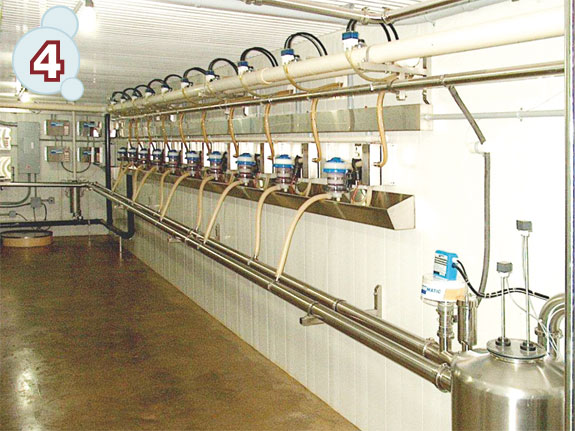
4. Proper placement of the receiver and its inlets. For optimal performance, milk pipes entering the receiver should always be positioned on the top half of the tank ( Photo 4 ). If pipes are installed on the bottom half of the receiver, water coming into the tank covers up the inlets, causing the system to lose vacuum.
That, in turn, stops the water flow going out to the units. Whenever you stop the continuous flow of water, you stop the cleaning process. Look for the inlet pipe placement when your dealer draws your design on paper. Ask questions to be sure this detail is not overlooked in installation.
The receiver in the lower left of this photo has its milk pipe inlets installed on the top half of the tank. Also, near the receiver, the air injector is installed low enough for easy access, inspection and maintenance. (Often we see air injectors installed up high, seemingly out of the way; however, it is not accessible for visual inspection or easy preventative maintenance.)
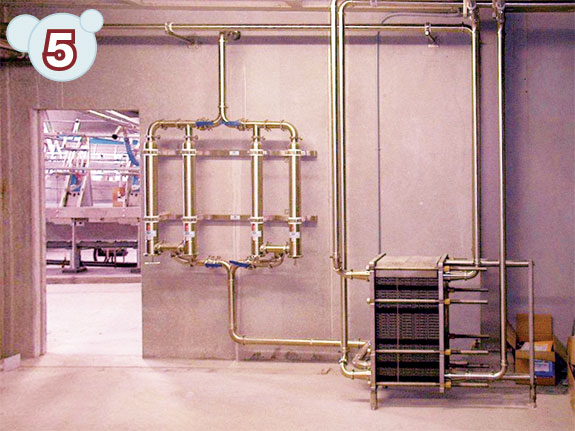
5. Proper positioning of the plate cooler and milk filters. Ensure your plate chiller is properly sized to pump your CIP solution through it. If it’s too small, it creates back pressure on the system. If it is too large, you won’t have the power to pump enough solution through it.
In addition, the milk filter cylinders should be installed vertically. This allows for the best drainage and removal of any debris caught in the filters. Filters installed horizontally require extra labor during the filter change to remove any debris, and inevitably some debris is left in the system. ( Photo 5 )
Plate chillers should be properly sized ( right ) and milk filters installed vertically ( left ), rather than horizontally. Photos courtesy of Ron Robinson.
6. Enough vacuum. Your vacuum pump should be the right size to ensure adequate flow through the system for both milking and washing. In addition, make sure you have the proper size lines for the vacuum pump.
In our experience, a parlor designed right the first time saves time and money over the long haul: Fewer chemicals are needed for cleaning, fewer maintenance issues and modifications are needed after initial installation, and quality milk premiums are earned instead of lost.
Do yourself a favor and include a CIP specialist during the design and installation process and ask questions regarding the above six key areas. You’ll save yourself time, money and the headaches of performance mysteries down the road. PD

-
Ron Robinson
- VP Business Development
- A&L Laboratories
- Email Ron Robinson






